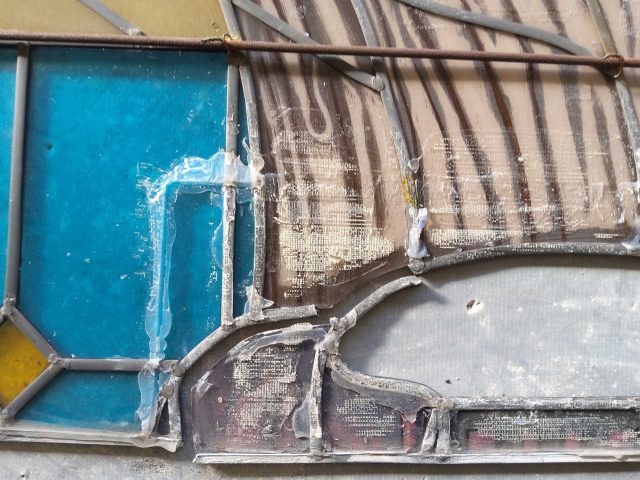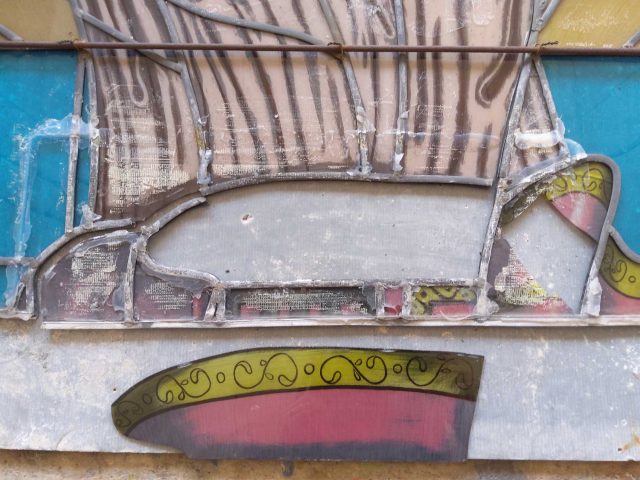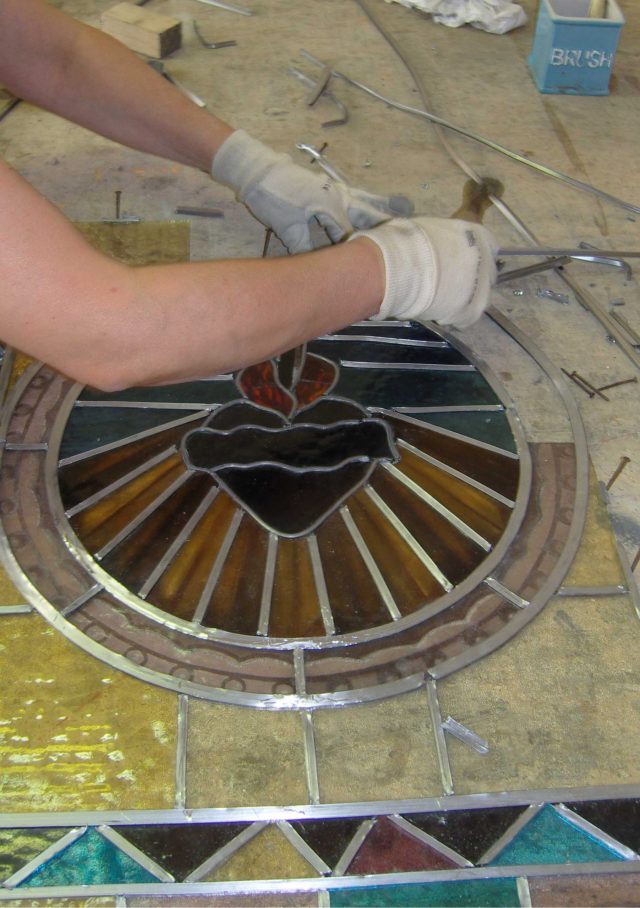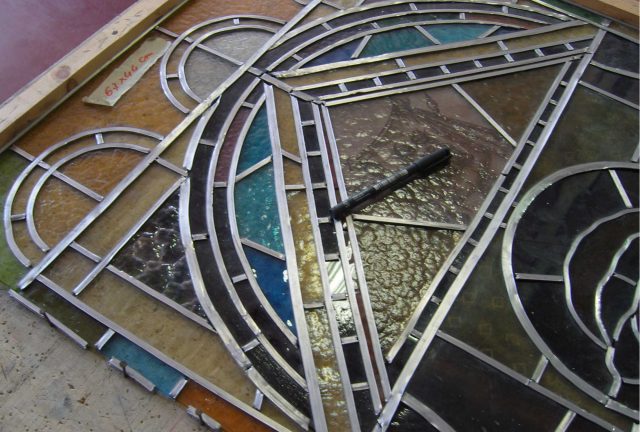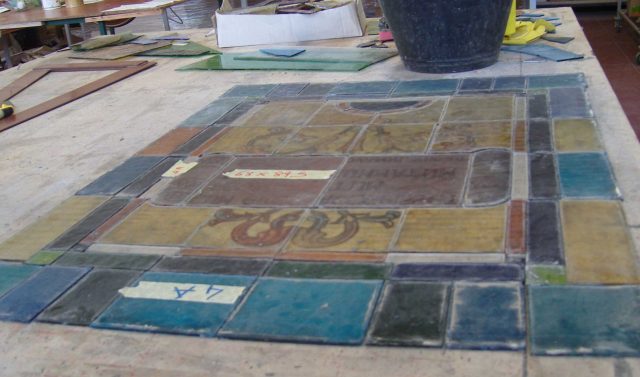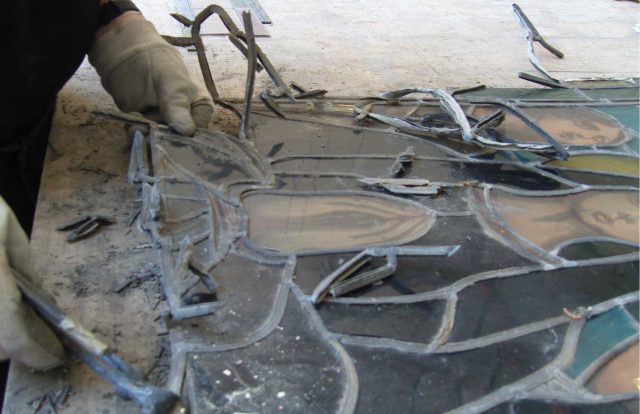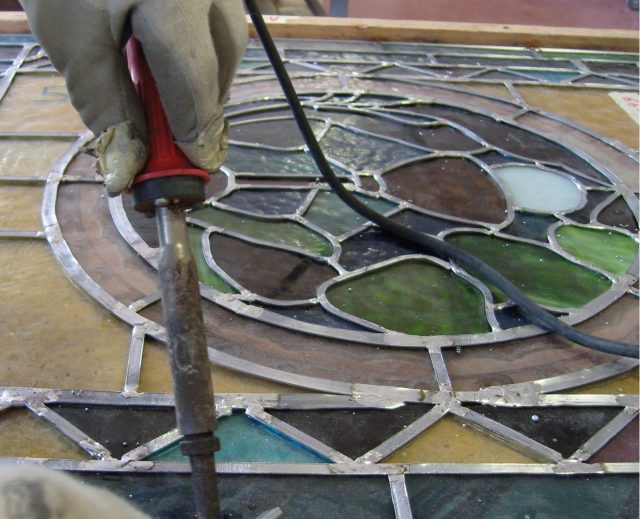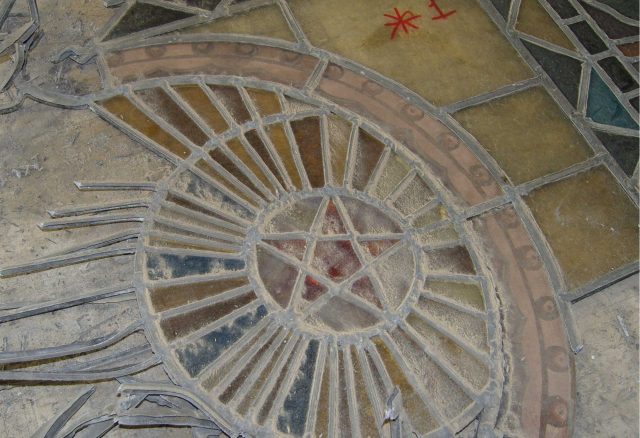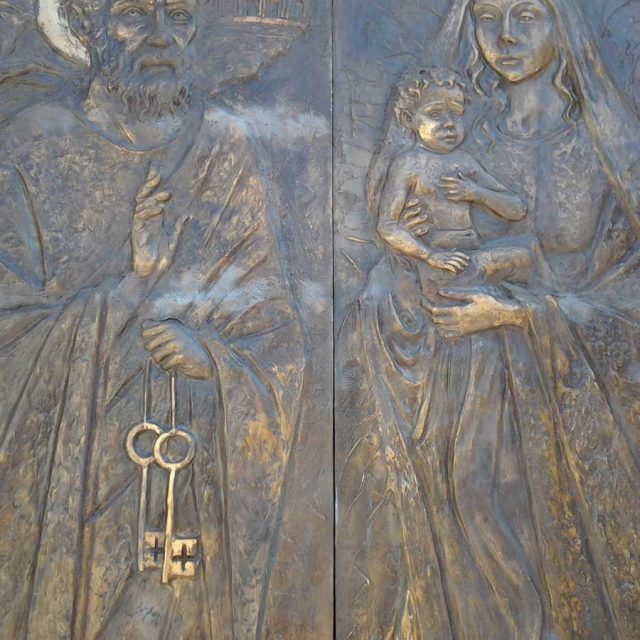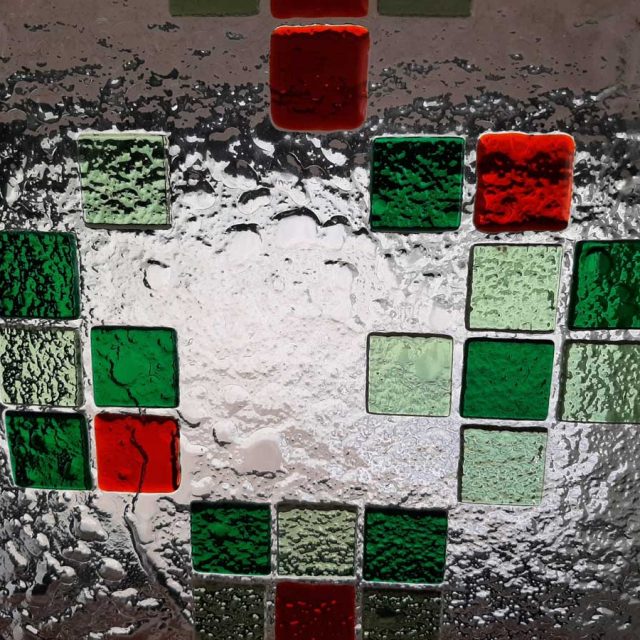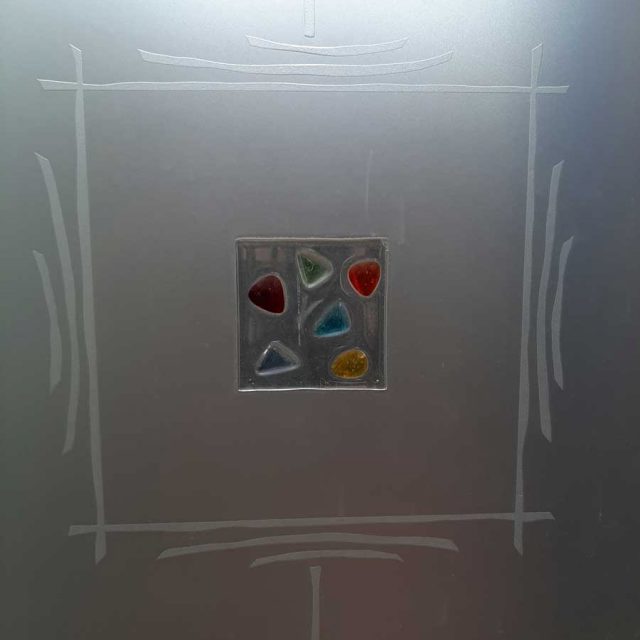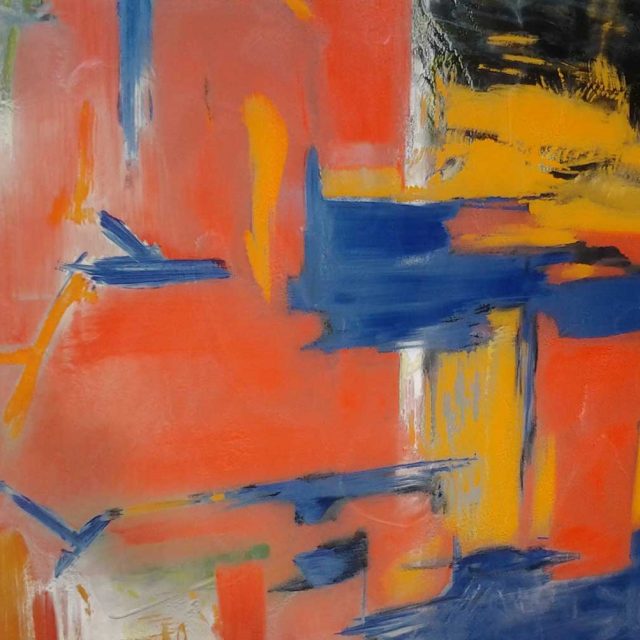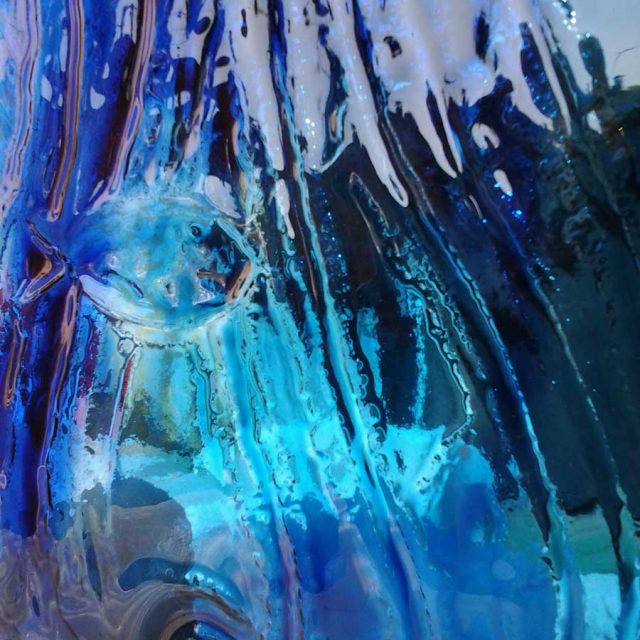Restoration
Perfect execution is the result of analysis, technical mastery and the synergy of many tools
Stained glass windows are made up of polychrome glass pieces, painted, glazed and bounded together by leads. The resulting panels are then mounted on frames and fixed to the openings with metal bars.
These panels are, therefore, multi-material artifacts significantly exposed to deterioration. The word deterioration indicates a series of very complex phenomena, modifications and decay of components, which happens at a speed depending on the quality of the glass itself as well as the environmental conditions.
Water, in the form of humidity, rain or condensation, is certainly the worst enemy of glass and its danger is enormously conditioned by the microclimat inside and outside the building where the window is mounted. Temperature, humidity, ventilation, direct solar radiation, exposure to bad weather and all the changes relating to these parameters during the day and night and throughout the year can speed up or, viceversa, drastically slow down the decay process. The increase in urban traffic and pollution are other factors that may accelerate the deterioration process.
Glass is a very hard material, difficult to scratch, impossible to bend and extremely fragile. In large antique windows, glass is certainly a weak component from a mechanical point of view. The complex system of stained windows is subject to tensions that can be continuous or occasional, such as those due to the action of wind or hail, but also to more or less accidental impacts. If these tensions are not dispelled by the supporting structure and instead reach the pieces of glass, these can break. The fractures originate from the weakest points of the window, like the edges or the surface, and from there can extend till they eventually break the glass into two or more fragments.
Another frequent cause of deterioration concerns the glass progressive surface deterioration and loss of transparency, that originates on the surfaces and then spreads to the inner part of it, as well as causing the detachment and loss of the grisaille.
All glasses are subject to surface degradation processes, yet the nature and the speed of these alterations are closely linked to the glass’s chemical composition and to environmental conditions. In Italy, thanks to a better quality of the materials used in the production, the problem of glass corrosion seems less widespread compared to northern Europe.
The rapid evolution in the investigation techniques and the continuous improvement of materials used in stained glass restoration and conservation, prevent the definition of standardized intervention methods, which are still very much opened to experimentation and debate.
Restoration of stained glass windows generally includes the following main phases:
- Examination and in depth analysis
- Restoration of the grisaille, where present
- Cleaning
- Bonding of fractures and integration of gaps
- Reassembly and grouting
- Protection
Today, restoration is no longer considered as a simple functional and aesthetic maintenance but rather the conservation of a unique work of art. As such, it involves not only technical knowledge but also the competences of an art historian, of a restorer and a scientific researcher.
One of the greatest difficulties in solving conservation problems is finding the ideal balance between the protection of stained glass windows in their environment and the prevention of new problems that may arise. Sometimes the counter-glazing can indeed increase the condensation phenomena, while the protective glass in direct contact with stained glass windows may even worsen the damage; not to mention the many side effects of interventions on the complex systems of grouting, weights and anchors.
By Gianantonio Mecozzi, in The role of the restorer and the conservation of stained glass





